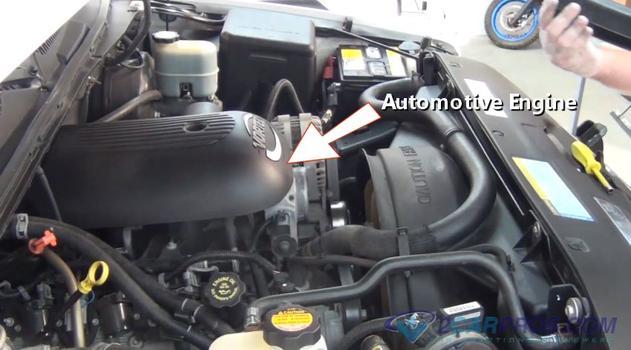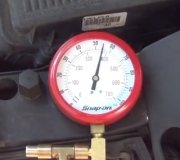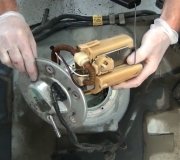What is the symptom when this happens? If the starter spins the engine, but the engine doesn't run until it cools down for about an hour, we'll need to look at the automatic shutdown, (ASD) relay and see if it's turning on. If it is not, the crankshaft position sensor and the camshaft position sensor are the common suspects.
If you hear just a single, rather loud clunk from the starter each time you turn the ignition switch to "crank", and the starter doesn't spin the engine, that is due to the contacts inside the starter solenoid are burned away. That will get progressively worse over the next weeks and months. In the case of my mother's '95 Grand Caravan, I ignored it for about six months until the day she lost count after turning the ignition switch over 700 times. Got a blister on her thumb, but it did eventually start. You can be sure I heard about it that night!
This is a real common problem with these little silver Nippensenso starters. Most people just replace the entire starter motor, but you can replace the burned contacts separately for much lower cost. In fact, a lot of hardware stores and farm and home stores have the repair kits. You can also buy the contacts from a starter / generator rebuild shop. Most larger towns have at least one of those. If you aren't aware of any, stop in at any nearby heavy truck repair shop. They're taking starters and generators there all the time and they'll be able to tell you where those shops are.
When you buy the repair kit, you'll get all four contacts shown in the photo. You'll use the one in the top left and one of the other three. When you buy these individually from a rebuilder, you'll have to take the solenoid cover off first to see which of those three is used. There is no way to tell without looking. There's two slightly different repair kits offered, and they're listed by model year, but you can't go by that. All of these starters interchange between at least 1989 and 2006, so if your starter has been replaced once already, it could be from any of those years.
The difference in the repair kits is the plunger they come with. The shaft on one is an eighth of an inch longer. I've always been able to reuse the original plunger. It normally gets replaced because of the heavy contact disc on it, but those rarely burn away.
This same starter is used on Toyota's. They use the same contacts, but their plunger has a much longer shaft. I've never found a rebuild kit for those. When you have to replace the plunger, those have to come from the Toyota dealer's parts department. They're very proud of them and charge accordingly.
If you need just the contacts, your best bet is to get them from the rebuilder. They cost about three dollars each. In the unlikely event you need a new plunger, you're better off looking for the rebuild kit. At the rebuilder shops, they cost more than the whole repair kit.
Image (Click to make bigger)
Tuesday, March 31st, 2020 AT 5:37 PM




